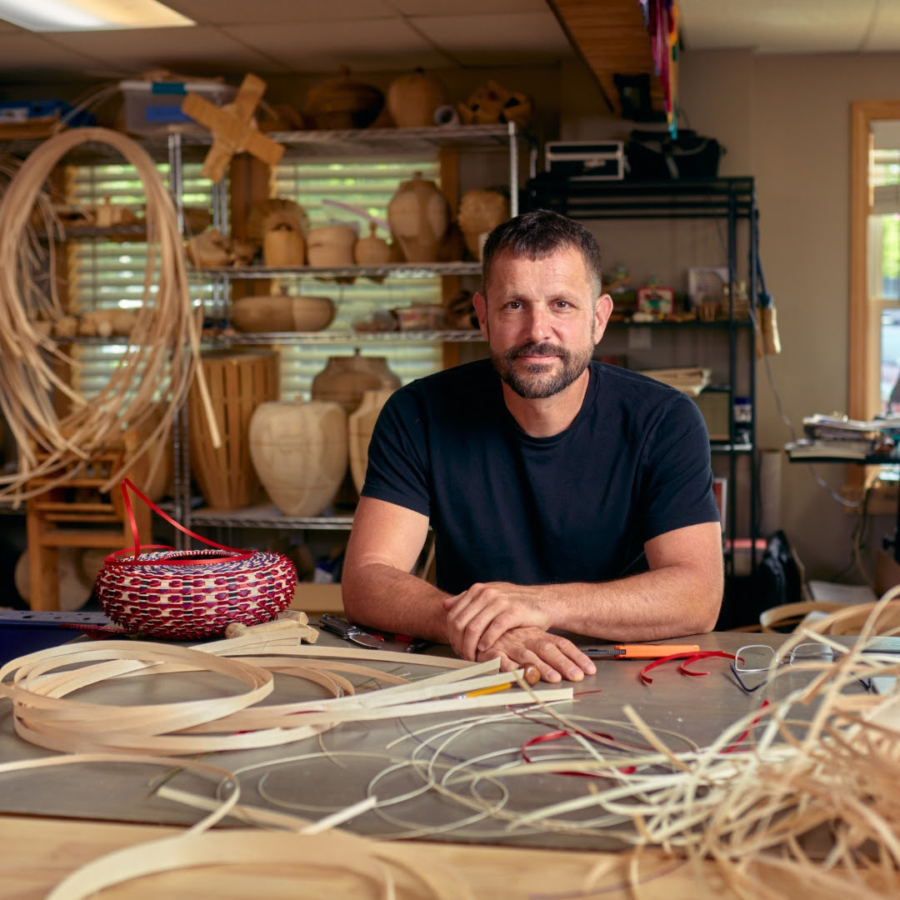October 27, 2000
Download as PDF
View on Los Angeles Times
At the entry to Margo Leavin Gallery, Mungo Thomson has installed “Six foot ruler (Prototype),” a sculpture made of anodized aluminum that appears to be exactly what its title says: a standard measuring stick 6 feet in length, which the artist has left leaning casually against the wall. Silk-screened in black ink on its 2-inch-wide surface are the words “Johnson Level & Tool mfg. Co. Inc.,” together with the usual small calibrations adding up to inches, starting at 1 and ending at 72.
Standing next to the sculpture, though, discomfort soon arises. How come the ruler seems a couple inches too short? It says 72 inches, but relationally it doesn’t feel like 72 inches.
Is it a perceptual trick, akin to the ones in a Sylvia Mangold painting from the 1970s, wherein the actual 6-foot length feels shorter because the ruler is tiled at an angle against the wall, while the viewer stands erect? Or have we been duped by a collision between artifice and expectation, since this ruler is actually a sculpture handmade by an artist, and not the product of a manufacturing company whose accuracy we’re automatically prepared to assume?
Thomson’s wryly engaging show, his first solo exhibition in Los Angeles, is characterized by this sort of gentle discord, in which perception, memory and imagination compete. At a time when technologies for reproduction are ubiquitous, from CDs to sheep, his chosen playing field is apt.
The center gallery is filled with homemade wind chimes, constructed from simple lengths of copper pipe and plastic fishing wire, which hang inside a room where no breeze will ever rustle to make music. Should you touch one? Blow on it? Wave your hands to make the random music? Or take one home to hang on your porch? And if you did, wouldn’t the tinkling sounds mostly arouse memories of cinematic cliches for portentous events, like a whispered Rosebud?
The show also includes three dozen pencil drawings on translucent sheets, which gives them the appearance of tracings. A rock band, a dance around a bonfire, an airplane crash, a domestic still life–each scene features an empty thought-balloon, where you fill in the blanks. A nearby pile of cheaply printed booklets reproduces the seemingly unrelated drawings, but here the thought-balloons include a linear text, which unfolds a meditation on the creative predicament of 21st century artists.
A side gallery features Thomson’s poetic, quietly powerful recording of the collected live recordings of Bob Dylan, played from white speakers mounted on a white wall. Everything on the original album had been erased, though–save for recurring waves of audience applause punctuated by snippets of guitar-chord plus a Dylan syllable or two. With volume turned down low, the mournful sound of disappearing art amid fading adoration seems to reverberate from very far away–from a place in some remote past, perhaps, where the juxtaposition of “live” and “recording” once made perfect sense.
Built on precedents as diverse as the work of Stephen Prina, Jim Shaw and Dave Muller, Thomson’s art puts its finger exactly on an elusive yet defining quality of current experience. It’s a subtle and compelling debut.



